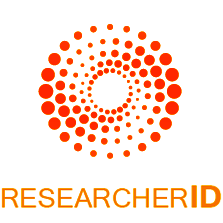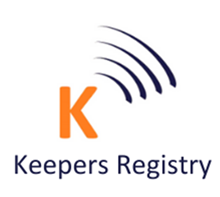One Day Paper Publication in UGC Approved Norms Journal under 500
Here are 20 essential questions and their detailed answers that can guide students, researchers, and authors in navigating the academic publishing landscape, with a focus on fast publication, low APCs, free journals, quick peer review, and other critical considerations:
1. What are APCs, and how do they affect my publishing choices?
Answer: APC stands for Article Processing Charges. These are fees charged by some journals to authors for publishing their articles open access. The fees can vary widely, from a few hundred to several thousand dollars. Authors often seek journals with low or no APC to reduce costs. Journals with no APC are typically subscription-based, while open access journals may charge APCs to cover their publication costs.
Tip: Look for journals that offer waivers or discounts on APCs, especially for authors from low-income countries.
2. What is a good strategy for finding journals with low or no APC?
Answer: To find journals with low or no APC, use tools like:
- DOAJ (Directory of Open Access Journals): A large database of journals that provide open access without charging APCs.
- Open Access Button: A tool for finding free-to-access scholarly articles.
- Journal websites: Many journals explicitly state their APC policy on their website.
Tip: Always check the journal’s policy regarding fees before submission to avoid surprises.
3. How can I ensure my article gets published quickly?
Answer: To speed up the publication process:
- Choose journals with fast review cycles: Look for journals that specifically advertise quick peer review timelines (e.g., “under 4 weeks”).
- Prepare a strong submission: Follow the journal’s submission guidelines precisely, and ensure your article is well-written, with minimal revisions required.
- Consider preprints: Uploading to a preprint server allows for immediate visibility while awaiting peer review.
Tip: Review the journal's average time to first decision, often listed on its submission guidelines page.
4. What is peer review, and how long does it typically take?
Answer: Peer review is the process where experts in your field evaluate your article for quality, accuracy, and contribution to the field. The peer review timeline can vary, but typical timeframes are 4-8 weeks.
Tip: Some journals offer "accelerated" peer review for an additional fee, which can significantly shorten this process.
5. What are the differences between open access and subscription-based journals?
Answer:
- Open Access: Articles are freely available to anyone. Authors may need to pay an APC to cover publication costs.
- Subscription-based: Readers or institutions pay for access to articles. Authors do not usually pay APCs, but articles are behind paywalls.
Tip: Consider hybrid journals, which offer both open access and subscription-based options, giving you flexibility.
6. Can I publish for free in open access journals?
Answer: Yes, some open access journals do not charge APCs. These journals may be supported by academic institutions, foundations, or government funding. It’s important to carefully research each journal’s publishing model and funding sources.
Tip: Look for journals that offer full open access but have no APCs due to sponsorship or funding support.
7. What are predatory journals, and how can I avoid them?
Answer: Predatory journals are exploitative publishers that charge authors high fees for publication without providing legitimate editorial or peer review services. They often have misleading information about their impact factors and reputation.
Tip: Avoid journals that:
- Have unclear editorial boards.
- Promise very fast publication times.
- Lack rigorous peer review processes. Check listings on the Beall’s List of Predatory Journals and Publishers to avoid these journals.
8. How do I find journals that are indexed in major databases (Scopus, Web of Science, etc.)?
Answer: You can check the journal’s website or use resources like:
- Scopus: Journal search tool for Scopus-indexed journals.
- Web of Science: Their journal selection guide includes lists of journals indexed by them.
- DOAJ: Some open access journals are indexed in major databases.
Tip: Journals indexed in major databases typically have higher visibility and credibility, but they may also have longer review and publication timelines.
9. What is a preprint, and how can it help with fast publication?
Answer: A preprint is a version of your research paper shared publicly before formal peer review. Uploading a preprint allows for immediate dissemination of your findings and can help increase your paper’s visibility.
Tip: Consider uploading to reputable preprint servers (e.g., arXiv, bioRxiv) to get your research out quickly while awaiting journal publication.
10. What are the advantages and disadvantages of publishing in a high-impact journal?
Answer:
- Advantages: Higher visibility, credibility, and citation potential. Publishing in a prestigious journal can boost your academic career.
- Disadvantages: Longer review times, higher competition, and potentially high APCs (for open access).
Tip: If time is a concern, consider whether the journal’s prestige is worth the delay.
11. How can I avoid rejection and improve my chances of acceptance?
Answer:
- Follow submission guidelines precisely: Ensure your article meets the journal’s formatting and submission requirements.
- Choose the right journal: Match your paper to a journal that publishes content similar to yours.
- Write a compelling cover letter: Clearly state the significance of your research and why it's a good fit for the journal.
Tip: A tailored cover letter that highlights the novelty and relevance of your research can make a big difference.
12. What is the role of the impact factor in selecting a journal?
Answer: The impact factor measures the average number of citations to recent articles published in a journal. A high impact factor often indicates a well-regarded journal, though it should not be the sole factor in choosing a journal.
Tip: Consider factors such as audience, scope, and review process in addition to the impact factor.
13. What is a hybrid journal?
Answer: A hybrid journal is one that offers both traditional subscription-based access and open access options. Authors can choose to publish their work open access by paying an APC.
Tip: This option is useful if you want your article to be accessible to a wide audience but are restricted by funding for APCs.
14. How do I handle copyright and licensing when publishing?
Answer: When submitting an article, you’ll be asked to sign a copyright agreement. Open access journals often ask authors to use a Creative Commons (CC) license, allowing others to reuse the work under certain conditions.
Tip: If you wish to retain copyright, choose a journal that allows authors to do so, especially with open access.
15. What should I include in my manuscript to make it more likely to be accepted?
Answer:
- Clear Structure: Follow the typical structure (Abstract, Introduction, Methods, Results, Discussion, Conclusion).
- Concise and Focused Writing: Be clear, concise, and directly related to your hypothesis and findings.
- Well-Defined Contribution: Clearly state your contribution to the field and its novelty.
Tip: Carefully proofread and consider professional editing services to ensure your paper is polished.
16. What are the ethical considerations when publishing?
Answer:
- Plagiarism: Always properly cite others’ work to avoid plagiarism.
- Data Fabrication: Do not manipulate or fabricate research data.
- Authorship: Ensure that all authors are appropriately credited for their contributions.
Tip: Familiarize yourself with the journal’s ethical guidelines before submitting.
17. Can I submit the same paper to multiple journals at once?
Answer: No, submitting the same paper to multiple journals simultaneously is considered unethical (known as duplicate submission). Most journals require that you submit your work exclusively to one journal at a time.
Tip: Wait for a decision from one journal before submitting to another.
18. What is the revision process like, and how can I handle it?
Answer: If a journal accepts your paper with revisions, the reviewers may ask for minor or major changes. This process can take several weeks.
Tip: Address each comment carefully, and don’t hesitate to seek clarification from the editor if needed. Always provide a detailed response to reviewer comments when resubmitting.
19. How can I increase the visibility of my published research?
Answer:
- Social Media: Share your paper on platforms like ResearchGate, Twitter, or LinkedIn.
- Presentations: Present your research at conferences and webinars.
- Preprints: Upload your paper to preprint servers to gain early visibility.
Tip: Reach out to bloggers or media outlets in your field to discuss your research.
20. What is the process for withdrawing my paper from a journal?
Answer: You can withdraw your paper before it’s accepted or published, but you must inform the journal’s editor. If your paper has already been accepted for publication, withdrawing it can be complicated and may damage your professional reputation.
Tip: If you decide to withdraw your paper, do so politely and promptly.












